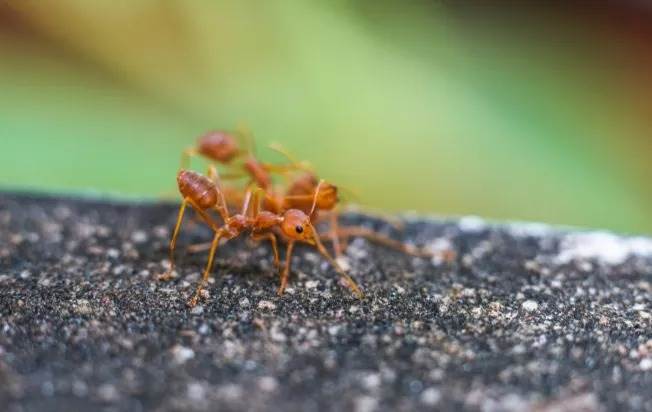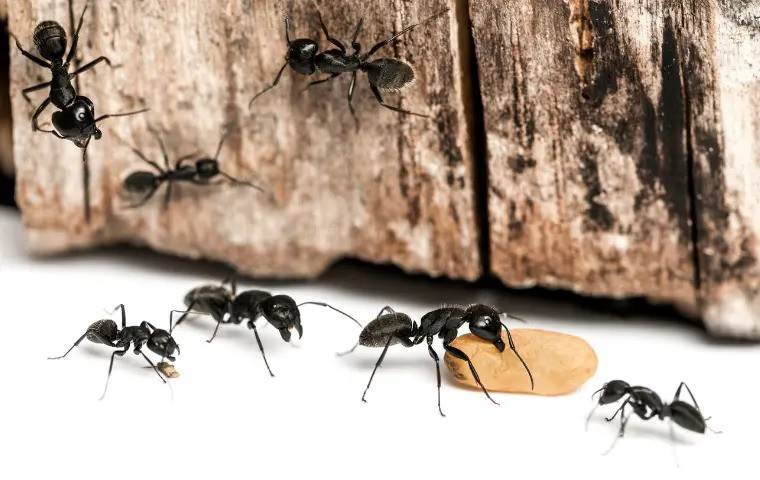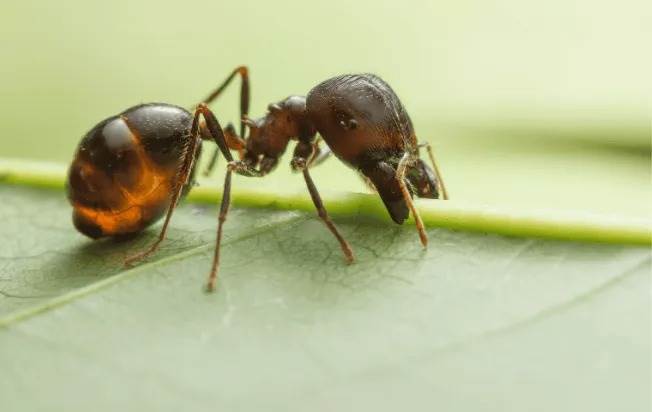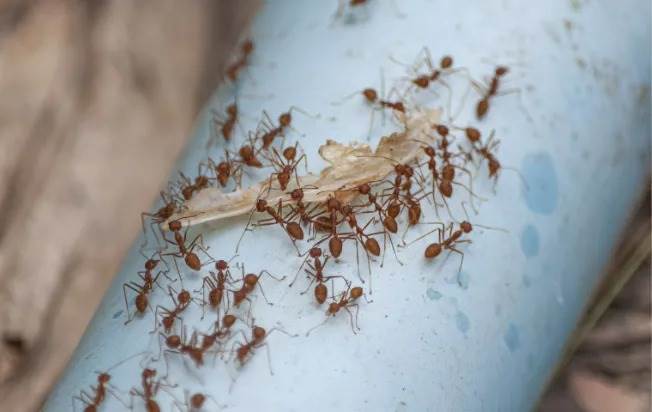Identifying Those Tiny Red Ants in Florida
An ant problem is any Florida homeowner’s nightmare. Nonnative ant species have been staging somewhat of a takeover in South Florida as of late (their dominance grew from 43% to 73% of the total ant population of South Florida over the past six decades).
Moreover, it can be difficult to distinguish between types of ants (especially when there are a variety of tiny, red ant species dominating the area). Read on to learn the differences between these destructive species and how to get rid of the tiny red ants plaguing your Florida property.
Key Takeaways
- You can eliminate red ants with diatomaceous earth , boiling water, contact insecticide, boric acid, fire ant baits, or simply by shoveling fire ant mounds out of your garden.
- Carpenter ants are bicolored (red and black) and give off a vinegar-like scent when disturbed. They can cause structural damage to your home.
- Big headed ants have disproportionately large heads (as their name suggests). They can be destructive to the local ecosystem.
- Pharaoh ants are shiny and have a light-to-dark “gradient” color. They nest in odd places in your home (i.e. inside stationery).
Fire Ants

Fire ants are tiny, typically 2-6mm long, with dark red to copper brown bodies. Ants from the same ant colony may vary dramatically in size, as the largest worker ants are often 2-3 times larger than the smallest. If you see fire ants in your yard, don’t get too close—they’re aggressive, have a painful sting, and swarm when threatened.
Common methods for eliminating fire ants include diatomaceous earth (which dries out and shatters exoskeletons when stepped on), boiling water, contact insecticide, boric acid, fire ant baits, or simply shoveling fire ant mounds out of your garden.
Characteristics |
|
Colony Size |
|
Diet |
|
How to Get Rid of Them |
|
Carpenter Ants

Carpenter ants vary in size, but are typically ¼-½ inch long. They’re black or bicolored (red and black) and have one node (a sort of spike or hump behind the thorax). When disturbed, they emit a strong vinegar-like scent.
Carpenter ants are often associated with wood, but despite popular misconception, they don’t eat wood. Rather, they tunnel through and live inside of wood (particularly moist or rotting wood), and their primary food sources are insects and sweets like fruit.
Common methods for eliminating carpenter ants include insecticide/pesticide (choose one with pyrethroids as the active ingredient), ant baits, diatomaceous earth, boric acid (you can “puff” boric acid powder into the ants’ wood tunnels using a bulb duster), eliminating pheromone trails using essential oils, or physically destroying nests you find inside your walls.
Characteristics |
|
Colony Size |
|
Diet |
|
How to Get Rid of Them |
|
Big Headed Ants

Big headed ants have, as their name suggests, very large heads that are disproportionate to their bodies. They’re typically reddish-brown. Big headed ants are dimorphic, meaning they only come in two sizes—major workers are 3-4mm long, while minor workers are about 2mm long. They nest in soil, leaving behind annoying “dirt piles.”
They can be easy to confuse with fire ants (both are tiny, red, and nest in dirt mounds), so be sure to look for two uniform sizes as opposed to a variety of sizes in order to distinguish between types of ant colonies.
While not a threat to humans, big headed ants are viciously invasive to ecosystems and have been known to wipe out native ant populations and kill other animal species (like baby seabirds in the Pacific).
Big headed ants are often eliminated using outdoor granular baits, some of which are designed specifically for big headed ants. You can also spray insecticides containing pyrethrins, or try simply cleaning your yard of potential nesting spots (i.e. congregations of debris, piles of firewood). If the problem becomes serious, consider altering your landscaping to maintain a gap between your home and any mulch or plants.
Characteristics |
|
Colony Size |
|
Diet |
|
How to Get Rid of Them |
|
Pharaoh Ants

Legend has it that pharaoh ants were one of the plagues that descended upon Ancient Egypt. These tiny ants, also an invasive species, are monomorphic (one uniform size) but vary slightly between 1.5-2 mm long. They have angular “shoulders”and two nodes. While most of their bodies are shiny and yellowish or light brown to red in color, their abdomens are darker to blackish, creating a “gradient” effect. Pharaoh ants have stingers, but rarely thrust them out. They nest in odd places (i.e. between sheets of stationery, in piles of linen or clothes, inside of appliances, in piles of trash).
The most common methods for eliminating pharaoh ants are baits and insecticides/repellent sprays. Keeping your home very clean is crucial, as not only will sanitation prevent a pharaoh ant infestation, it will also eliminate food sources like crumbs and force the ants to feed on baits. Insect growth regulators (IGRs) are often used indoors as pharaoh ant “birth control” (they sterilize the queen and prevent the production of worker ants).
Characteristics |
|
Colony Size |
|
Diet |
|
How to Get Rid of Them |
|
Professional Ant Control in Florida
If you suspect an ant infestation in your Florida home or business, it’s never too early to call a pest control professional. A professional exterminator can find the source of your pest problem and recommend the appropriate treatment to eliminate it (and ensure it doesn’t come back).
Most species of tiny red ants can be destructive to your home or invasive to the local ecosystem, so it’s best to call a professional before the problem gets out of hand.
